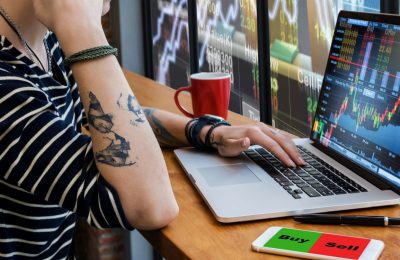Contents

It helps traders determine whether the trading volume is flowing in or out of a financial security, such as a stock, currency pairs, or commodity. Trading volume is a powerful indicator that can help traders identify trend reversals. When an uptrend ends and a new downtrend starts to form, an increase in trading volume sends a strong signal that a trend reversal is happening. Let’s say that stock XY has been in a multi-week uptrend and currently trades at $110. A trader could analyse the trading volume for the stock to determine whether the underlying uptrend has got further upside potential.

During uptrends and in sideways markets, a stock’s price will occasionally run into a resistance level—a point where upward trends start to fizzle as selling pressure overcomes buying pressure. When a stock’s price breaks through that level, the breakout is generally believed to be more significant if volume is high or above average. A breakout accompanied by low volume suggests enthusiasm for the move may be lacking. Investors can use volume information to assist in their determination of whether a stock would be good for their portfolio. For example, a rising stock should bring increasing volumes, indicating a strong bullish conviction. However, if investors see a rising price and declining volume, it might suggest a lack of interest, and a reversal may be just around the corner.
Trading volume can help an investor in identify momentum in a security and confirm a trend. For example, if trading volume increases in a particular session, prices generally move in the same direction. That’s why, for a security to remain in an uptrend, the volume of the security should ideally increase along with price. A cryptocurrency’s trading volume is the number of coins that have exchanged hands during a defined period of time, usually 24 hours.
More choices. More ways to invest how you want.
Days with higher trading volume are weighted more than days with lower trading volume. Because it is very easy to manipulate a stock with low trading volume . Long-term investors, especially institutional investors like mutual funds, usually avoid stocks that don’t have sufficient trading volume. To get a detailed representation of trading volume, traders can use volume indicators that are directly plotted on the chart.
Altcoin exchanges operate one order book per currency pair, where prices are determined from active trading. Most altcoins are thereby traded against bitcoins, effectively making it the virtual reserve currency. Only the most popular altcoins sometimes have trading pairs with fiat currencies such as the US Dollar, the Euro, the Chinese Yuan, or the Russian Ruble. When using a volume-based indicator or analyzing volume in particular, there are a few ways to determine move strength or weakness.
In a situation where there is uncertainty over the future direction of the market among investors, the trading volume of futures contracts tends to increase. Analysts use bar charts to quickly determine the level of volume. When the bars on a bar chart are higher than average, it’s a sign of high volume or strength at a particular market price. By examining bar charts, analysts can use volume as a way to confirm a price movement. If volume increases when the price moves up or down, it is considered a price movement with strength.
Or, if you feel ready to trade you can go straight to a live account. Here are some common ways to use volume to confirm a bearish price move, as well as an example of how volume can undermine a price trend. Here are some common ways to use volume to confirm a bullish price move, as well as an example of how volume can undermine a price trend.
The Arms Index, for example, measures relative volume in advancing stocks versus declining stocks. A value below 1 for this index suggests bullish sentiment and a value above 1 indicates bearish sentiment. In a head and shoulders pattern, volume usually decreases with each successive peak. If it does not, a trader might not expect the reversal pattern to complete. If volume does decrease with each peak and the pattern completes, the bearish breakout (i.e., a move lower) should then occur on increasing volume.
Identifying Trend Reversals
It is typically https://bigbostrade.com/ in USD but can also be reported in BTC or other currencies. The measure how many trades take place for a security or on an exchange on a given trading day. A high trading volume is an indicator of a high level of interest in a security at its current price. It is an especially important tool in technical analysis, in which trading volume is used to determine the strength of a market indicator. For example, a price rise on heavy trading volume indicates that that price rise is a true indicator, while a technical analyst likely would be more skeptical of the same rise on lighter trading volume.
- If price reaches new highs or lows while volume decreases, this could mean that a potential reversal is on its way.
- Finally, following a positive shock to the measure of sellers, which moves the market away from steady state, prices drop and recover gradually with the drop being larger when frictions increase.
- That’s why traders look for other indications of enthusiasm when they want to confirm or refute a price signal.
- The AAL stock has been in a strong downtrend, with the OBV indicator confirming each push lower.
- Investors can combine this data with other information in their investigation.
Stocks can be categorized as high volume or low volume, based on their trading activity. Howerver, high volume stocks typically trade at a volume of 500,000 or more shares per day. The above content provided and paid for by Public and is for general informational purposes only.
Volume trading in forex means something slightly different to securities volume. In FX trading, it’s the number of lots traded in a currency pair within a specified time period – put simply, it’s the amount of currency that changes hands from sellers to buyers. In periods of high volume, prices tend to change more quickly due to the sheer number of people making bids and offers on the asset. A downtrend without increasing and/or above average volume implies investor concern is limited. While the stock’s price may continue to fall, traders who use volume analysis may start to follow the stock and watch for signs of a pickup supported by increasing volume. When a stock’s price is falling, you want its daily volume to be less than the average daily volume—to signal that the selling pressure is going down.
Market Dashboard
Trading volume is the quantity of stocks, bonds, futures contracts, options, or other investments that are bought sold in a specific period of time, normally a day. It’s an indication of the interest that investors have in that particular security or product at its current price. Trading volume refers to the total number of securities traded during a period of time, usually a day.
It can help traders analyse price-action, anticipate price movements, and identify possible reversal points of a financial security. Calculating volume in stocks is the total amount of shares traded for the day, which includes both buy and sell orders. It’s pretty easy to find stock volumes, as all transactions are publicly available in the order book of an exchange. Trading volume is the total number of an asset that were traded during a given time period. It’s usually measured for exchange-traded assets, such as stocks, bonds, options, futures and commodities. Trading volume doesn’t just indicate how many transactions are occurring, but also includes the total amount of an asset that was bought or sold during the transaction.
When the price breaks below a support level, the breakdown is generally believed to be more significant if volume is high or above average. A breakout accompanied by low volume suggests enthusiasm is lacking. The other thing to look for with average volume is whether the stock is liquid enough. The more thinly traded the stock is, the riskier it can be—if there aren’t a lot of shares trading just one seller can push the price down.
A popular volume indicator is On Balance Volume, or OBV, that uses volume data to anticipate future price movements. Another powerful way of using trading volume to confirm price-action is during trend reversals. Conversely, if you wanted to confirm a reversal on a resistance level, you’d look for high selling volume and if you wanted to confirm a break in the level of resistance, you’d look for low selling volume. Contrariwise, below average and/or decreasing volume can signal a lack of enthusiasm, which you can see in Chart 2, where volume is declining even as the price continues to creep higher.

Once the total volume of your Value Area matches or slightly surpasses the number found in step 2, the Value Area has been determined. Value Area High – The highest price level within the value area. Virtual Assistant is Fidelity’s automated natural language search engine to help you find information on the Fidelity.com site. As with any search engine, we ask that you not input personal or account information. Information that you input is not stored or reviewed for any purpose other than to provide search results.
All expressions of opinion are subject to change without notice in reaction to shifting market conditions. Data contained herein from third-party providers is obtained from what are considered reliable sources. However, its accuracy, completeness, or reliability cannot be guaranteed.
It is a charting tool that truly does have a wide array of uses. Unlike many other studies, there is little to no debate about Volume Profile’s usefulness. The data that is provided by Volume Profile is indisputable, leaving it to the trader to find new and creative ways to use it. Consider the trading strategy example given earlier in the article. Being able to compare a real-time event (the current day’s open) with historical events (the previous day’s volume profile) and make a trading decision based on the relationship is a great example of this. The volume of trade refers to the full measure of the number of securities, i.e., shares or contracts traded during a specific trading day.
Although traders believe that the company’s earnings will beat Street forecasts, the stock price keeps trading in a sideways market and forms a rectangle pattern. Once a strong bullish candle breaks above the rectangle pattern, traders should check whether trading volume confirms the upside breakout. Volume in stocks means the total number of shares traded on a specific stock exchange during a given timeframe. If a stock has a high volume, it’s more likely to be a long-term move, whereas a stock with a low volume is more likely to experience short-term moves. Average daily trading volume is the average amount of shares traded each day for a stock.
I understand that residents of my country are not be eligible to apply for an account with this FOREX.com offering, but I would like to continue. For full access to this pdf, sign in to an existing account, or purchase an annual subscription. The institutional subscription may not cover the content that you are trying to access. If you believe you should have access to that content, please contact your librarian.
Morningstar calculates the https://forexarticles.net/ based on the trailing twelve months—other websites may use different lengths of time. Get stock recommendations, portfolio guidance, and more from The Motley Fool’s premium services. I/we have no positions in any stocks mentioned, and no plans to initiate any positions within the next 72 hours. Anderson is CPA, doctor of accounting, and an accounting and finance professor who has been working in the accounting and finance industries for more than 20 years. Her expertise covers a wide range of accounting, corporate finance, taxes, lending, and personal finance areas. Volume tends to be highest near the market open and close and the start of the week and last day of the week.
The https://forex-world.net/ is less likely immediately break through that price. From a charting perspective, the decline in stocks this year interrupted the long-term uptrend. Tactical investors that are trying to determine short-term market direction might look to see what volume is saying about US stocks. For sovereign currencies, these exchanges commonly operate continuously, i.e., 24 hours per day, 7 days every week. The complete alignment of trading hours with calendar time provides an aspect of liquidity that the world’s largest stock exchanges do not provide. Brokerage services for alternative assets available on Public are offered by Dalmore Group, LLC (“Dalmore”), member of FINRA & SIPC.

